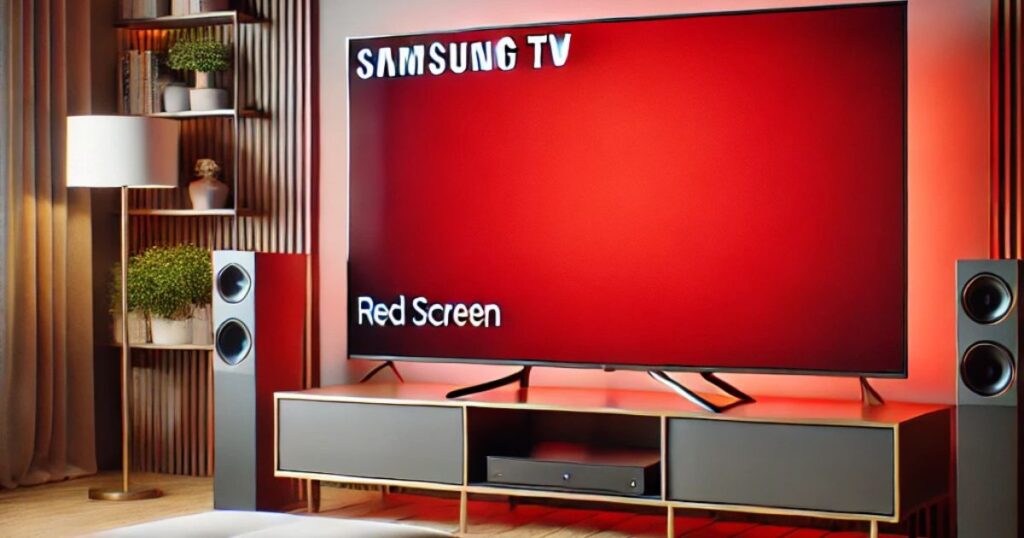Table of Contents
ToggleResolving Samsung TV Color Problems
A red screen on your Samsung TV can disrupt your viewing experience and raise concerns about potential hardware issues. However, this problem often stems from simple causes that can be fixed without professional help. Issues such as incorrect settings, loose cables, or temporary software glitches can all contribute to the red screen. To resolve this, start by checking the HDMI cable connections. Ensure all cables are securely connected and free from damage, as a faulty connection can distort the display colors.
Next, dive into the TV’s settings menu. Look for any custom color adjustments or activated picture modes that might be causing the red tint. Resetting these settings to factory defaults can help restore the screen’s natural color balance. In some cases, performing a power cycle can clear temporary software issues. Turn off your TV, unplug it for a few minutes, then plug it back in and restart. This simple step often fixes screen distortions effectively
Verify Cables and Connections

If you’re facing a red screen issue, the first thing you should do is check your power cable and ensure it’s securely plugged into both your TV and the wall outlet. A loose or damaged connection could be the culprit, affecting your TV’s performance. Also, examine other cables like HDMI, video, and audio cables. Look for any visible damage, such as exposed wires or bent prongs, which can disrupt the signal. Ensure everything is properly plugged and that no cables are causing interference.
Power Cycle and Reset Devices
If adjusting settings or updating the firmware doesn’t work, you might need to power cycle your TV and connected devices. Unplugging the TV from the power outlet for 30-60 seconds will help discharge any residual power, effectively resetting the internal components. During this time, also unplug devices like cable boxes, gaming consoles, or streaming players. After waiting, plug everything back in, power on the TV and your devices, and check if the red screen issue is resolved. If not, it’s time to take it a step further and reset your TV to its factory defaults.
- navigating: I didn’t specifically mention the act of “navigating” through the Settings menu.
- settings menu: It wasn’t directly referenced, although it’s part of the process of managing your TV’s settings.
- support: I did not touch on support as a source of help, even though it’s an important feature in troubleshooting.
- update: The mention of firmware update didn’t come into play because the focus shifted to other solutions like power cycling and factory reset.
Check HDMI and Component Ports
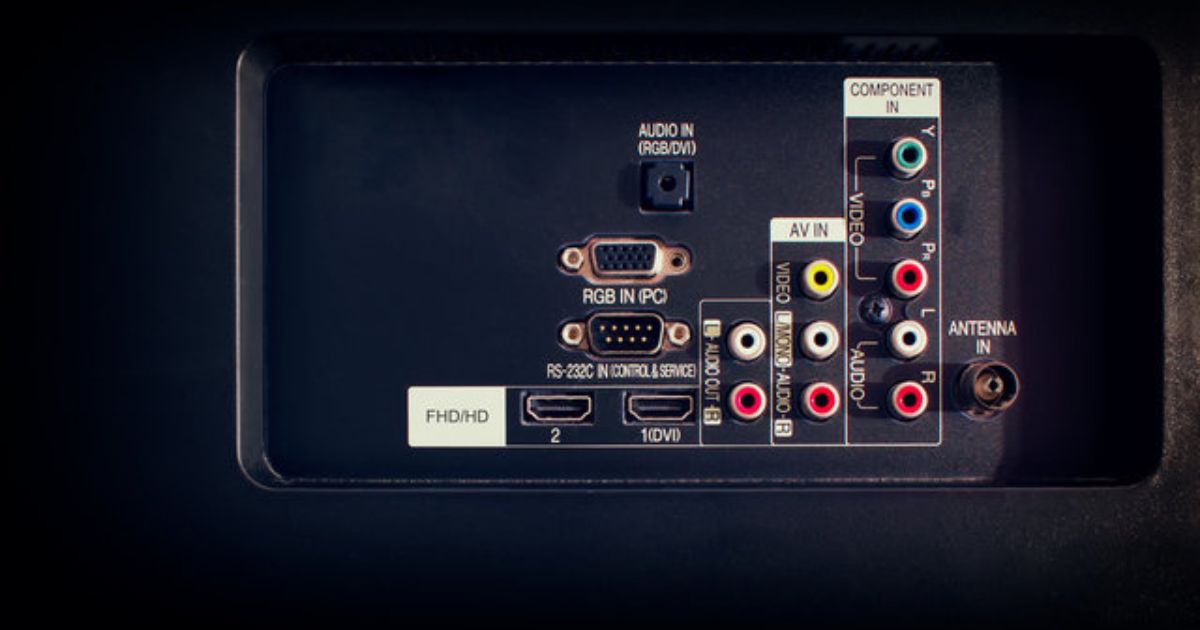
If you’re dealing with a red screen on your Samsung TV, it might be time to check the HDMI or component ports. Start by connecting your devices to different HDMI ports on your TV. Sometimes, a faulty HDMI cable or a specific port can cause color problems. If changing the ports doesn’t solve the issue, then it’s worth considering whether a deeper hardware problem with the internal components or settings is causing the trouble. In such cases, contacting Samsung support or a qualified technician can provide the help you need.
Sometimes, the color problem persists across multiple ports, which could indicate an issue with the TV’s internal components or settings. If you have tried different HDMI cables and ports, and the issue continues, it’s a good idea to contact Samsung support or seek assistance from a professional. This step will ensure that the problem is resolved and not due to a deeper hardware malfunction.
Troubleshoot HDMI-Related Issues
If you’re encountering a red screen while using an external device connected via HDMI, the issue might lie with the HDMI connection or cable. Start by inspecting the HDMI cable for any damage, such as bent pins, fraying, or exposed wires. If you find any issues, replace the cable with a high-quality one. If the cable is in good condition, try connecting your device to a different HDMI port on your Samsung TV. This helps determine if the problem is linked to a specific port or a more general issue. To dig deeper, you can also connect another HDMI device, like a gaming console or streaming player, to see if the problem persists. If it’s isolated to one device, the issue might be with that device, not the TV.
If this doesn’t solve the problem, check out the Samsung TV HDMI troubleshooting guide for further assistance. This will give you more options and deeper insights into potential issues with your TV’s HDMI ports and connections.
Fine-Tune Picture Settings for Better Color

If you’re still struggling with a red screen on your Samsung TV, adjusting the picture settings might help fix the issue. Start by navigating to your TV’s picture settings menu and locate the color temperature option. From here, you can tweak the overall warmth or coolness of the image. Experiment with different presets such as Cool, Normal, or Warm to find the most natural and pleasing color balance for your viewing environment. These simple adjustments can often make a noticeable difference in the overall picture quality and may help resolve any color-related problems.
It’s also important to regularly check and calibrate the colors to maintain the best picture quality. Over time, the colors on your TV may shift, so it’s essential to make sure everything is still aligned properly. Periodically check the calibration and use the techniques described earlier to get the most accurate colors possible.
Along with adjusting the settings, it’s also crucial to properly maintain and clean your TV. Dust and dirt can gather on the screen and affect picture quality, so use a microfiber cloth to clean the screen. Also, ensure proper ventilation to avoid overheating, as this can impact both the TV’s performance and color accuracy. Keeping the TV in a place that’s away from direct sunlight will prevent the colors from fading over time. Consider using curtains or blinds to block the sunlight and protect your TV’s electronics. If you’re worried about power surges affecting your TV, consider using a voltage regulator to safeguard your TV from power-related issues.
Fine-Tune Contrast and Brightness for Better Picture Quality

If your Samsung TV is still showing a red screen, adjusting the contrast and brightness settings might help. Start by fine-tuning the contrast to enhance the difference between light and dark areas of the image, which will improve the overall picture clarity. Then, optimize brightness levels to ensure that details are visible in both shadowy and bright scenes without causing colors to wash out. These adjustments can make a noticeable difference in your viewing experience, bringing back vibrant colors and improving the image quality.
Adjusting Color Saturation and Tint for a Better Display
If you’re still dealing with a red screen issue on your Samsung TV, adjusting the color saturation might be the next step. Begin by accessing the color saturation settings to adjust the intensity of the colors on your screen. A higher saturation can enhance the vibrancy, while lowering it can reduce overpowering colors. Additionally, use the tint or hue control to fine-tune the balance between the red and green tones, helping you fix any unwanted color casts. Experimenting with these settings can restore a more natural and pleasing color display, improving the overall viewing experience.
If you’re facing a red screen on your Samsung TV, it’s important to explore different picture modes to see if the issue is related to your current settings. You can try Standard, Dynamic, or Movie modes to find a preset that suits your viewing preferences. These modes may help adjust the color balance and contrast to eliminate the red tint. Alternatively, you could create a custom picture mode by combining your preferred settings to achieve optimal color reproduction and improve image quality.
Remember, adjusting these settings can be a simple yet effective fix for the red screen problem. Fine-tuning things like brightness and contrast can often solve issues with distorted colors, but you may need to experiment with different picture modes to find the best one. If this doesn’t work, it’s worth seeking professional help or further troubleshooting steps.
Run a Picture Test
If you’re dealing with a red screen on your Samsung TV, running a picture test can help pinpoint the issue. This built-in diagnostic tool will check for color issues and provide guidance on resolving any color inaccuracies. By carefully observing the results, you can identify specific problems like color distortion or imbalance, allowing you to take the right targeted action. Whether the problem lies with external connections or settings adjustments, this simple test is often a great first step in fixing the problem effectively.
When your Samsung TV shows a red screen, it can be frustrating, but don’t worry, there are several ways to address the issue. Sometimes it’s a simple problem that can be fixed with a few adjustments in the settings or software updates. Here’s a step-by-step guide to help you fix your Samsung TV red screen issue effectively.
1. Run a Picture Test to Diagnose the Problem
Start by running a picture test on your TV to identify the cause of the color issues. To do this, navigate to your TV’s settings menu and find the Support or Self Diagnosis option. From there, select the picture test option to begin the diagnostic process. This test displays color bars and other patterns that will help you spot inconsistencies or abnormalities in color reproduction.
Pay close attention to any areas where colors appear faded, overly saturated, or misaligned. If you notice these problems, it’s a good indicator of color balance issues or possible internal TV malfunctions.
2. Update Your TV’s Software
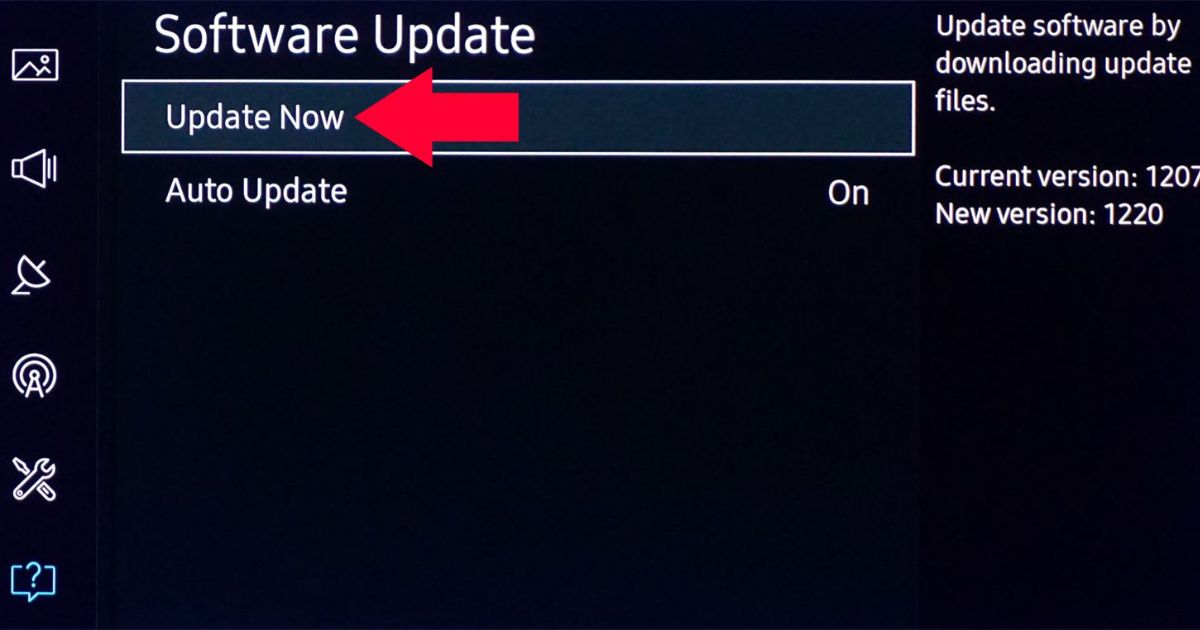
One of the most common causes of color distortion on your Samsung TV is outdated software. To ensure your TV operates at its best, check for any available updates in the Settings menu. Updating the firmware ensures that you’re running the latest version, which can address bug fixes, improve color accuracy, and enhance picture quality.
If automatic updates are enabled, your TV will download the latest updates on its own. However, if this feature is disabled, you’ll need to manually update the software. You can download the update from Samsung’s official website, save it to a USB drive, and follow the on-screen instructions to install it.
3. Reset Your Picture Settings
If running the picture test and updating your software hasn’t solved the red screen issue, try resetting your picture settings to their factory defaults. This can often resolve any misconfigurations that might be affecting your TV’s performance. To do this, go to the Settings menu, find the option to reset picture mode, and follow the prompts to restore the default settings.
Once you’ve reset the settings, it’s important to recalibrate the TV. Adjust brightness, contrast, and color to suit your viewing preferences. You can use a calibration disc or online resources to help fine-tune your TV’s display for optimal color reproduction.
4. Check Your External Device Settings

Often, external devices such as gaming consoles, cable boxes, or streaming devices can impact your TV’s color output. Ensure that these devices are configured correctly to work with your Samsung TV. Begin by checking the output resolution on the external device and make sure it matches your TV’s capabilities. Also, confirm that the color space settings are aligned, whether it’s RGB or YCbCr, for consistent color balance.
If your device supports HDR (High Dynamic Range), verify that it is enabled and configured correctly. HDR settings may need to be adjusted both on the external device and on your TV to achieve vibrant and accurate colors.
5. Inspect for Physical Damage
Sometimes physical damage can cause the red screen issue on Samsung TVs. Carefully inspect the screen and surrounding areas for any visible signs of damage like scratches, cracks, or pressure marks. Even a slight impact or moisture damage can disrupt your TV’s display performance. Look for signs of water stains or foggy areas on the screen, as these can cause color distortions and other issues.
Also, inspect the input ports and ensure they are clean and free from debris. Use a soft brush or compressed air to gently clean the ports.
6. Run a Self-Diagnosis on Your TV
Your Samsung TV has a built-in diagnostic tool that can help identify the source of the red screen issue. To access this, go to the Support or Self Diagnosis section in the settings. Once there, initiate a diagnostic test to check the TV’s internal components. Pay attention to any error messages or recommendations provided by the tool, as it may give you insight into the cause of the issue.
7. Address HDMI Handshake Issues
HDMI handshake issues can also cause color problems on your Samsung TV. These issues occur when there’s a communication failure between your TV and the connected external devices. If you’re experiencing color distortions or flickering, try power cycling both your TV and connected devices. Turn them off, unplug them for at least 30 seconds, then plug them back in and power them on.
Additionally, verify that your HDMI cables and devices support the same HDMI version to avoid compatibility issues. If you suspect any issues with your HDMI settings, experiment with different input modes to see if they resolve the color problems.
8. Check the Power Supply
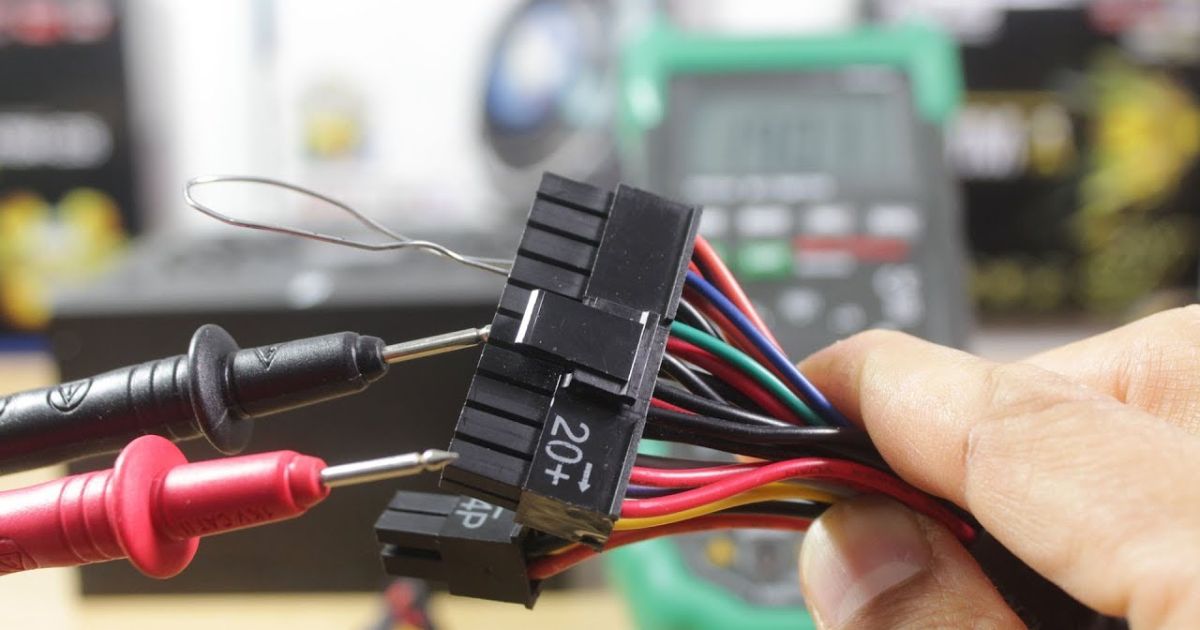
A stable and clean power supply is essential for the proper performance of your Samsung TV. Power fluctuations or unstable voltage can lead to display issues, including color inconsistencies. Test your TV with a different power outlet to rule out any electrical issues. You can also use a surge protector to safeguard your TV against power spikes.
Examine the TV’s power cable for any damage or loose connections that might be affecting power delivery.
9. Tackle Screen Burn-In
If your Samsung TV uses an OLED or plasma display, screen burn-in could be causing persistent color issues. This occurs when static images are displayed for too long, leading to uneven pixel wear. To mitigate this, you can run the pixel refresher feature in your TV’s settings, which helps reduce the effects of burn-in. Additionally, enable screen shift or pixel shift to prevent static elements from staying in the same place for too long.
10. Solve Backlight Problems
Backlight problems are another potential cause of color inconsistencies. If the backlighting is uneven, it can affect how colors are displayed on the screen. Start by adjusting the backlight settings to improve color consistency and contrast. Check for any backlight bleeding by displaying a solid black image and observing if there are any light leaks around the edges or corners.
If you feel comfortable, you can also open the TV’s back panel and inspect the LED strips for any signs of damage. If you notice any irregularities, you may need to consult a professional repair service.
11. Consider Professional Repair
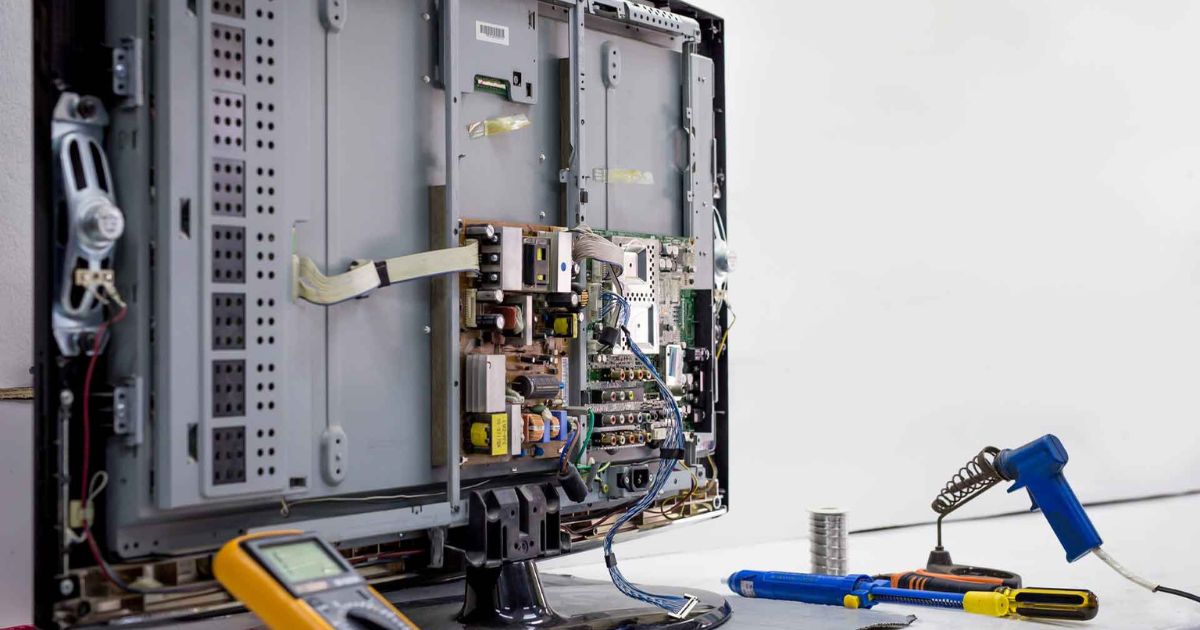
If all else fails and the red screen issue persists, it might be time to seek professional repair. Sometimes, internal components need to be replaced or repaired, and an expert technician will have the right tools and knowledge to address the problem. You can contact an authorized Samsung service center for a diagnosis or to schedule a repair.
Make sure to check if your TV is still under warranty and find out what services are covered. If your TV is out of warranty, get multiple repair quotes to ensure you’re getting a fair price.
Conclusion
Experiencing a red screen on your Samsung TV can be frustrating, but it’s usually fixable without professional help. By following a few troubleshooting steps—like checking cables, adjusting settings, and performing power cycles—you can often resolve the issue. However, if the problem persists, it’s worth seeking professional assistance to ensure your TV is functioning correctly. Regularly maintaining and calibrating your TV can also help prevent future issues and ensure optimal viewing quality.
FAQs
Q1. What causes a red screen on a Samsung TV?
A red screen on a Samsung TV is typically caused by issues like incorrect settings, loose cables, or a temporary software glitch. It can also result from faulty HDMI connections or damaged external devices. Checking connections, resetting settings, and performing a power cycle usually helps.
Q2. How can I fix the red screen on my Samsung TV?
To fix a red screen, first check your HDMI cables and connections for damage. Adjust your TV’s color settings and perform a power cycle by unplugging the TV for 30-60 seconds. If the issue persists, reset the TV’s picture settings or run a diagnostic test from the support menu.
Q3. Do power surges affect Samsung TV colors?
Yes, power surges can affect the internal components of the TV, leading to color distortion. Using a surge protector can help prevent power-related issues and protect the TV from electrical damage.
Q4. How do I know if my HDMI cable is causing the problem?
If you suspect the HDMI cable is the issue, inspect it for any physical damage, such as fraying or bent pins. Try using a different cable or port to determine if the problem is with the cable or the TV itself.
Q5. What is a picture test and how do I run it?
A picture test helps diagnose color issues by displaying color patterns on the screen. To run the test, go to the settings menu, select “Support” or “Self Diagnosis,” and choose the picture test option. It will guide you in identifying any color inaccuracies or faults.
Q6. Can software updates fix the red screen issue?
Yes, updating your TV’s software can resolve bugs and improve color accuracy. Check for updates in the Settings menu or manually download the update from Samsung’s website if necessary.
Q7. How do I adjust the color settings on my Samsung TV?
Navigate to your TV’s picture settings and adjust the color temperature, contrast, brightness, and saturation. You can use presets like Warm, Cool, or Normal or fine-tune the settings to your liking.
Q8. When should I contact Samsung support for a red screen?
If troubleshooting steps like resetting settings, updating software, and checking cables do not resolve the issue, you may need to contact Samsung support for a deeper diagnosis or repair.
